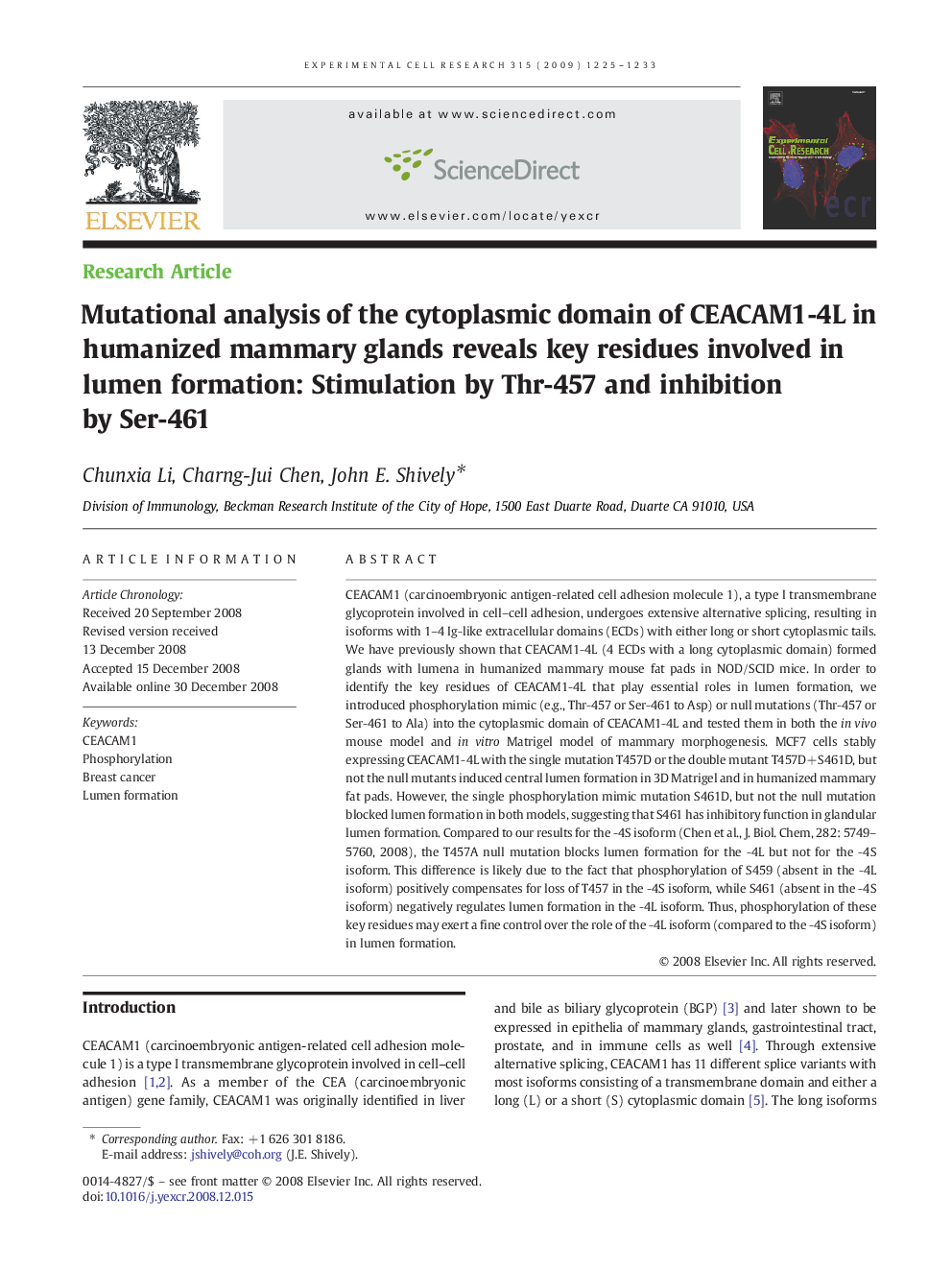| کد مقاله | کد نشریه | سال انتشار | مقاله انگلیسی | نسخه تمام متن |
|---|---|---|---|---|
| 2132574 | 1086700 | 2009 | 9 صفحه PDF | دانلود رایگان |

CEACAM1 (carcinoembryonic antigen-related cell adhesion molecule 1), a type I transmembrane glycoprotein involved in cell–cell adhesion, undergoes extensive alternative splicing, resulting in isoforms with 1–4 Ig-like extracellular domains (ECDs) with either long or short cytoplasmic tails. We have previously shown that CEACAM1-4L (4 ECDs with a long cytoplasmic domain) formed glands with lumena in humanized mammary mouse fat pads in NOD/SCID mice. In order to identify the key residues of CEACAM1-4L that play essential roles in lumen formation, we introduced phosphorylation mimic (e.g., Thr-457 or Ser-461 to Asp) or null mutations (Thr-457 or Ser-461 to Ala) into the cytoplasmic domain of CEACAM1-4L and tested them in both the in vivo mouse model and in vitro Matrigel model of mammary morphogenesis. MCF7 cells stably expressing CEACAM1-4L with the single mutation T457D or the double mutant T457D+S461D, but not the null mutants induced central lumen formation in 3D Matrigel and in humanized mammary fat pads. However, the single phosphorylation mimic mutation S461D, but not the null mutation blocked lumen formation in both models, suggesting that S461 has inhibitory function in glandular lumen formation. Compared to our results for the -4S isoform (Chen et al., J. Biol. Chem, 282: 5749–5760, 2008), the T457A null mutation blocks lumen formation for the -4L but not for the -4S isoform. This difference is likely due to the fact that phosphorylation of S459 (absent in the -4L isoform) positively compensates for loss of T457 in the -4S isoform, while S461 (absent in the -4S isoform) negatively regulates lumen formation in the -4L isoform. Thus, phosphorylation of these key residues may exert a fine control over the role of the -4L isoform (compared to the -4S isoform) in lumen formation.
Journal: Experimental Cell Research - Volume 315, Issue 7, 15 April 2009, Pages 1225–1233